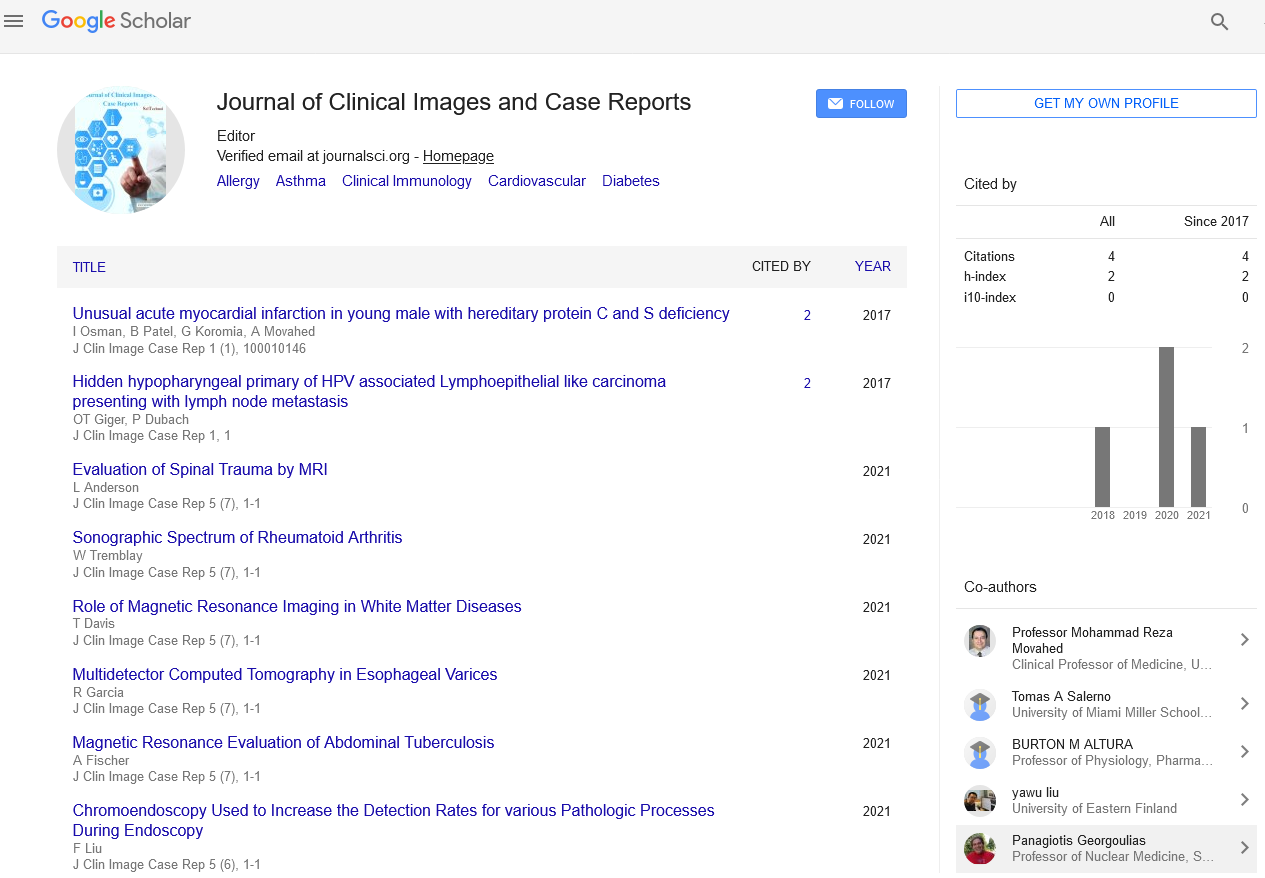Opinion Article, J Clin Image Case Rep Vol: 7 Issue: 3
Evaluation of Venous Thrombosis and its Risk Factors
Puthalapattu Swathi*
1Department of Cardiology, Michigan State University, Hyderabad, India
*Corresponding Author: Puthalapattu Swathi,
Department of Cardiology,
Michigan State University, Hyderabad, India
E-mail: swathi.p@gmail.com
Received date: 02 June, 2023, Manuscript No. CICR-23-107412;
Editor assigned date: 05 June, 2023, PreQC No. CICR-23-107412 (PQ);
Reviewed date: 19 June, 2023, QC No. CICR-23-107412;
Revised date: 26 June, 2023, Manuscript No. CICR-23-107412 (R);
Published date: 06 July, 2023, DOI: 10.4172/CICR.1000251.
Citation: Swathi P (2023) Evaluation of Venous Thrombosis and its Risk Factors. J Clin Image Case Rep 7:3.
Description
Venous thrombosis is a common and potentially a severe medical condition characterized by the formation of blood clots within the veins. It can occur in various parts of the body, most commonly in the deep veins of the legs (Deep Vein Thrombosis or DVT) or the veins of the lungs (Pulmonary Embolism or PE).
Pathophysiology of venous thrombosis
The pathogenesis of venous thrombosis involves a Virchow's triad is an arrangement of three components: Endothelial injury, stasis of blood flow, and hypercoagulability. It will explore the mechanisms by which these factors contribute to thrombus formation and the activation of the coagulation cascade.
Risk factors for venous thrombosis
Various risk factors can increase an individual's susceptibility to venous thrombosis. These include immobility, surgery, trauma, cancer, hormonal contraceptives, pregnancy, and genetic factors such as inherited thrombophilias. It will explore the various risk factors and their association with venous thrombosis.
Clinical presentation of deep vein thrombosis
Deep Vein Thrombosis (DVT) can present with a wide range of symptoms, including leg pain, swelling, warmth, and redness. However, some cases may be asymptomatic. It will delve into the clinical features of DVT and the importance of early recognition and diagnosis.
Clinical Presentation of pulmonary embolism
Pulmonary Embolism (PE) occurs when a clot removes from a DVT and travels to the lungs, causing potentially life-threatening complications. The clinical presentation of PE can vary, ranging from mild dyspnea to severe hemodynamic instability. It will explore the signs and symptoms of PE and the importance of strong diagnosis and intervention.
Diagnostic evaluation of venous thrombosis
Accurate and timely diagnosis of venous thrombosis is essential to prevent complications and guide appropriate management. It will explore the diagnostic methods utilization, including compression ultrasonography for DVT, ventilation-perfusion scanning and Computed Tomography Pulmonary Angiography (CTPA) for PE, and D-dimer testing.
Prognostic assessment and risk stratification
Risk stratification is essential to determine the appropriate management technique for patients with venous thrombosis. It will be associated with scoring systems, such as the Wells criteria for DVT and PE, and how they help to guide treatment decisions.
Anticoagulant therapy for venous thrombosis
Anticoagulant therapy is the foundation of venous thrombosis management. It will explore the different anticoagulant agents, including unfractionated heparin, Low-Molecular-Weight Heparin (LMWH), Direct Oral Anti-Coagulants (DOACs), and Vitamin K Antagonists (VKAs). The duration and dosing of anticoagulant therapy will also be discussed.
Catheter-directed thrombolysis and thrombectomy
In some cases of extensive DVT, catheter-directed thrombolysis or thrombectomy may be considered to dissolve or remove the clot. It will explore interventional techniques and their role in selected patients.
Prevention of venous thromboembolism
Preventing venous thromboembolism is a major impact, especially in high-risk individuals enduring surgery or hospitalized patients. Prophylactic measures, such as early ambulation, compression stockings, and pharmacological prophylaxis.
Long-term management and recurrence prevention
After an initial moment of venous thrombosis, patients may require long-term anticoagulation to prevent recurrence. The duration and challenges of long-term management and the role of novel therapies in specific cases.
Venous thrombosis is a significant healthcare concern with potentially severe consequences must be recognized and treated immediately. It is essential for physicians to have an in-depth knowledge of the disorder's pathology, risk factors, clinical presentation, and diagnostic procedures for physicians to provide early and effective care. Management strategies, including anticoagulant therapy and interventional approaches, have significantly improved patient outcomes. However, ongoing research is essential to further improve perceptions and treatment options for venous thrombosis and its associated complications.
 Spanish
Spanish  Chinese
Chinese  Russian
Russian  German
German  French
French  Japanese
Japanese  Portuguese
Portuguese  Hindi
Hindi 